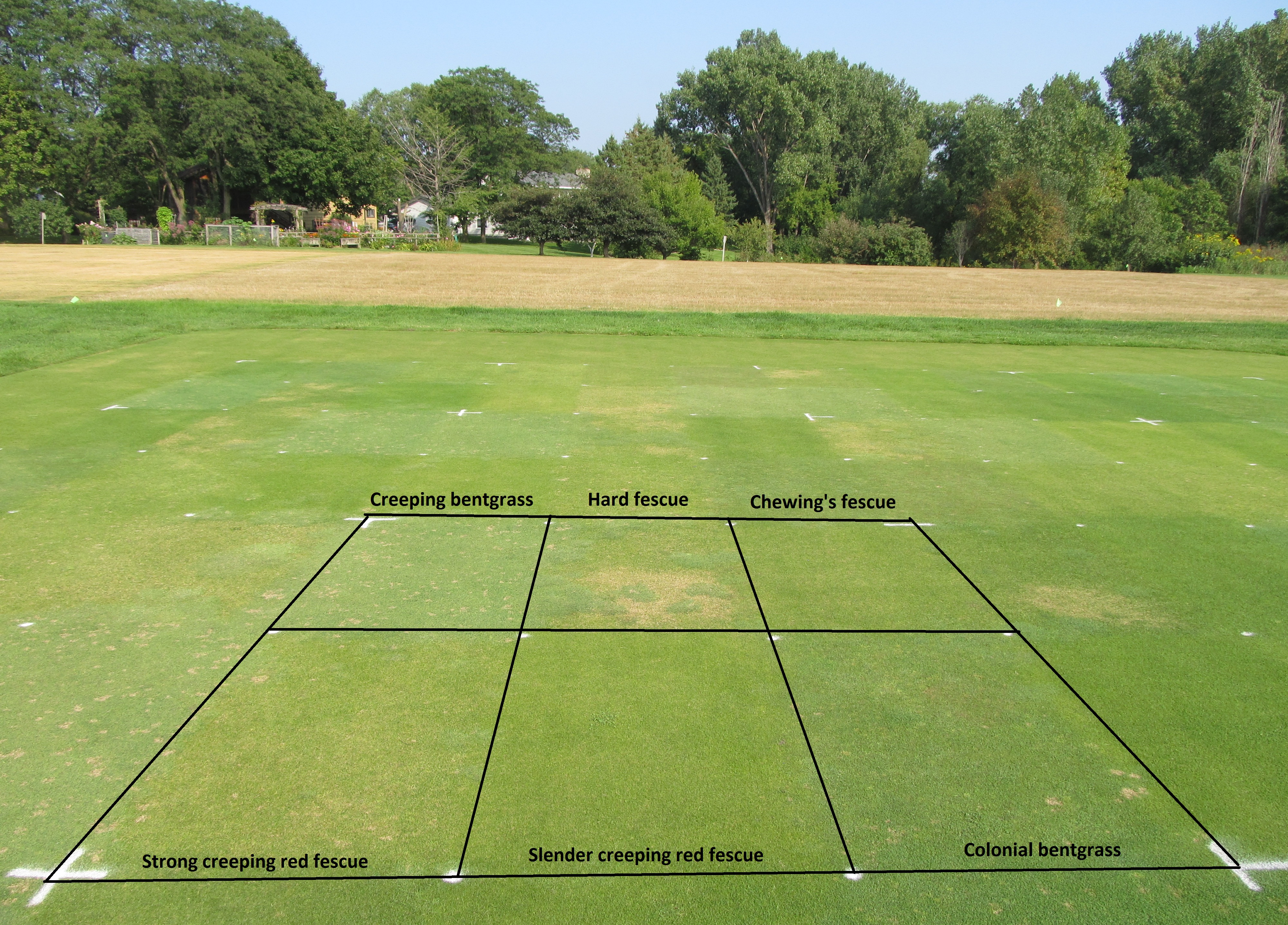By Dominic Petrella
Before I came to the University of Minnesota I had never actually seen a fine fescue golf green in person. I’ve always had the impression that fine fescue species could only produce a suitable greens surface in climates similar to Ireland, the U.K., or the Pacific Northwest of the U.S. Recent research, however, is helping me to realize that fine fescues could be suitable for golf greens in Minnesota (or similar Midwest locations) that want a lower input option.
Overall, fine fescue species (hard, slender creeping red, strong creeping red, sheep, and Chewing’s fescue) are considered to require less input (water, fertilizer, pesticide, etc.) to maintain a quality turfgrass stand. However, there is a lack of information on what input thresholds exist to produce a quality golf green using a low input fine fescue species in the northern US. Therefore, we first set out to determine how much nitrogen is required to maintain a low input fine fescue putting green.
Starting May 25th, 2017 we began to apply treatments consisting of 0 lb., 1 lb., 2 lb., and 4 lb. nitrogen/1000 ft2 per growing season to hard fescue, slender creeping red fescue, strong creeping red fescue, Chewing’s fescue, creeping bentgrass, and colonial bentgrass plots at the University of Minnesota Turfgrass Research, Outreach and Education Center (TROE). The total amounts of fertilizer were split into 4 equal applications (spring, summer, late-summer, fall), and we have been applying a granular mix of 70% methylene urea : 30% urea. These plots are mowed at 0.200” three times per week, and we have not been applying pesticide to mimic a low input management system.
Through 3 fertilizer applications, it’s apparent that compared to creeping and colonial bentgrass, fine fescues can produce quality greens height turfgrass with less nitrogen. However, slender creeping red fescue and Chewing’s fescue both maintain higher quality compared to strong creeping red fescue and hard fescue at all rates of nitrogen. With our 1 lb. per year nitrogen treatment (as seen in the photo below) both slender creeping red fescue and Chewing’s fescue have yet to succumb to dollar spot (these species actually have very little to no dollar spot present in any of our nitrogen treatments), and these two fine fescue species have also maintained a high density with little to no weed encroachment.
Hard fescue plots have not tolerated the low height of cut, and regardless of nitrogen rates, hard fescue would not be an appropriate species to use for golf greens. Strong creeping red fescue lacks the density and disease resistance seen with both Chewing’s and slender creeping red fescue, and the overall turf quality of strong creeping red fescue is also inferior under all nitrogen treatments. Overall, slender creeping red and Chewing’s fescue can produce acceptable quality greens height turf using substantially less nitrogen compared to creeping bentgrass. However, we still need to determine how well these two fine fescue species withstand traffic and wear stress under low nitrogen programs like this.
